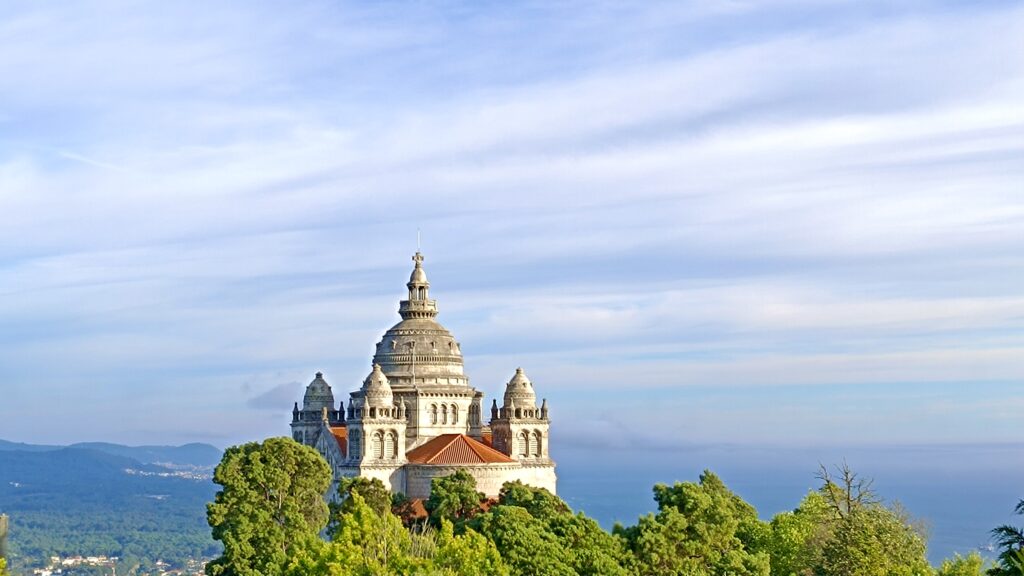After breakfast take a moment before leaving from Esposende to Viana do Castelo to admire the ocean in the brief section between the sandbags and the lighthouse and Fort of St. John the Baptist. You will not be able to see the ocean up close for the rest of today’s journey. The path will soon curve inland and you will arrive in the village of Marinhas, where you can pass by the Church of St. Micheal and its albergue.
As you keep walking from Esposende to Viana do Castelo you will continue to pass through small villages like Mar and Belinho where you will have occasional glimpses of the ocean in the distance. Further along the path you will pass Antas’ monument to the Camino, a useful road marker to orient yourself along with the yellow arrows and your Fresco Tours maps.
The Way begins to ascend gently towards the village of Moldes and then proceeds up a relatively steep hill to the church of Santiago de Castelo de Neiva. After a brief visit to the church you will continue up the dirt path through the forest.
You will soon emerge opposite the impressive São Romão de Neiva monastery which was founded in the 11th century by Benedictine monks. Its striking Mannerist facade dates from the 17th century, and if you would like you can walk up the 186 steps opposite to see the 20 azulejo panels representing Stations of the Cross and other biblical episodes. After exploring you can continue your walk up a brief hill before descending into Viana do Caselo for the night.
The 645 meter-long Eiffel bridge into Viana affords spectacular views along the valley and estuary. Viana do Castelo itself merits some time to appreciate its charms. A wealthy city during the Portuguese explorations in the Age of Discoveries, it has many attractive historical buildings and a beautifully restored Misericordia church.
After another rewarding day of walking be sure to explore the city without a care as you know your luggage has been safely transferred to your hotel.






